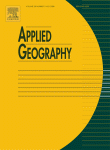
Hypotheses based on a set of socio-economic, cultural, and political functional units are examined. The geographic techniques employed in the study include spatial mean, standard distance, standard deviational ellipse, nearest neighbor analysis, and spatial analysis on a network: cross K function and network cross K function. The study not only explores the spatial pattern, distribution, and association of key socio-economic, cultural, and political units which could reveal internal structures and activities of an urban system, but also demonstrates a number of operational procedures that permit applications of traditional and advanced spatial analysis approaches in the study of real urban systems.
Links
Resource collections
- UN Habitat - Urban Response Collection
- Urban Response - Urban Crisis Preparedness and Risk Reduction
- Urban Response Collection - Community Engagement and Social Cohesion
- Urban Response Collection - Economic Recovery
- Urban Response Collection - Environment and Climate Change
- Urban Response Collection - Housing, Land and Property
- Urban Response Collection - Urban Crisis Response, Recovery and Reconstruction
- Urban Response Collection - Urban Resilience